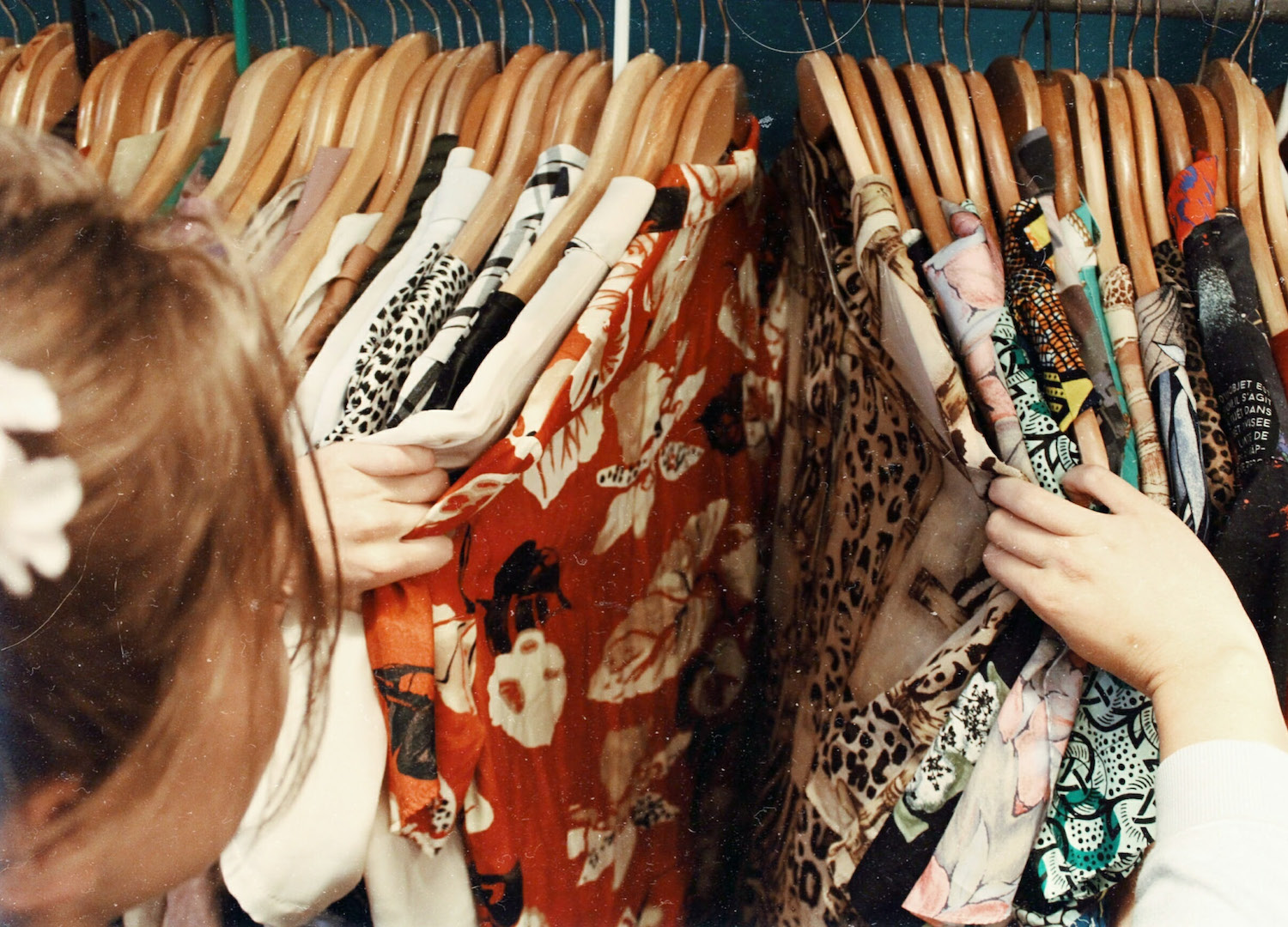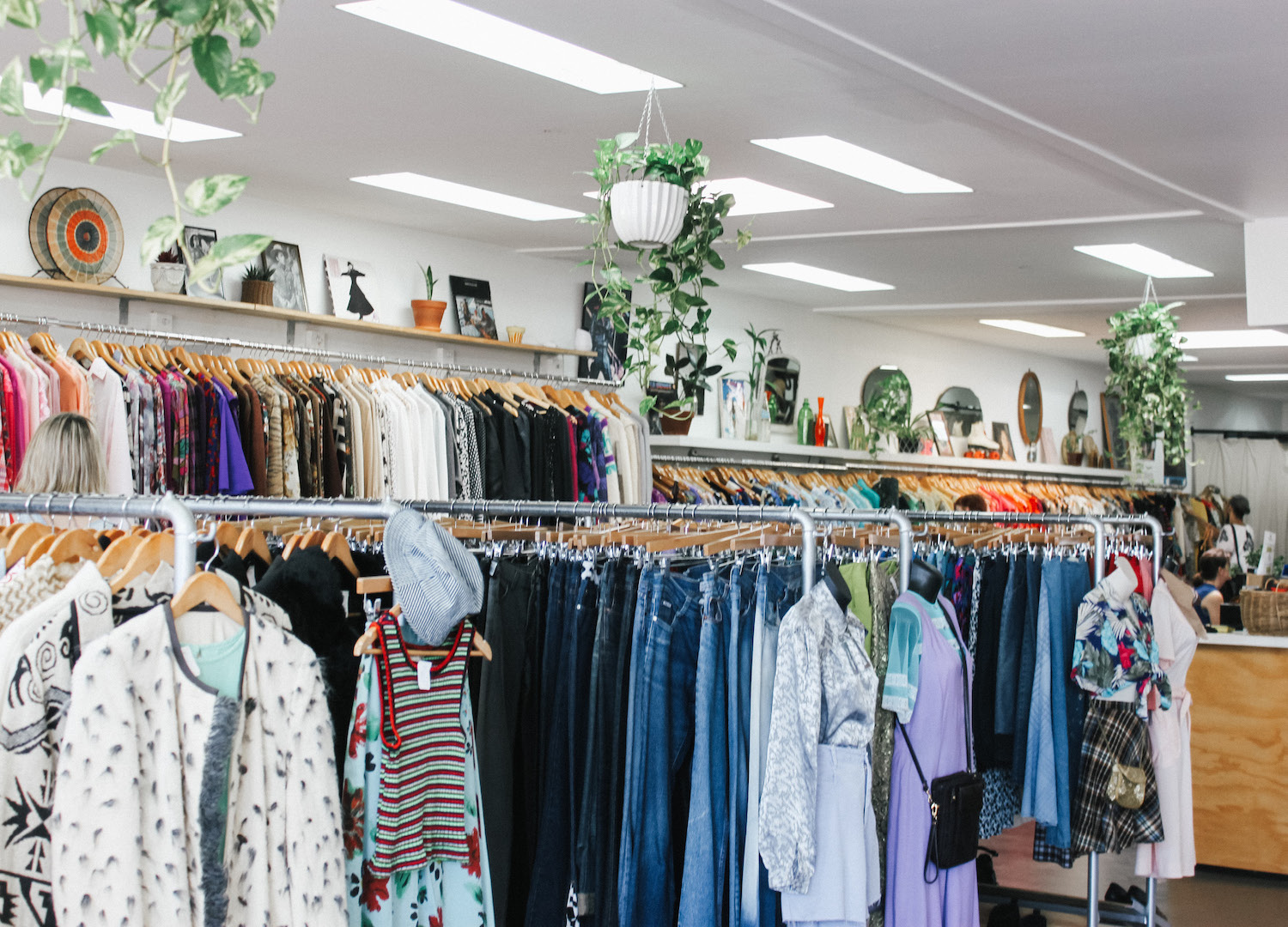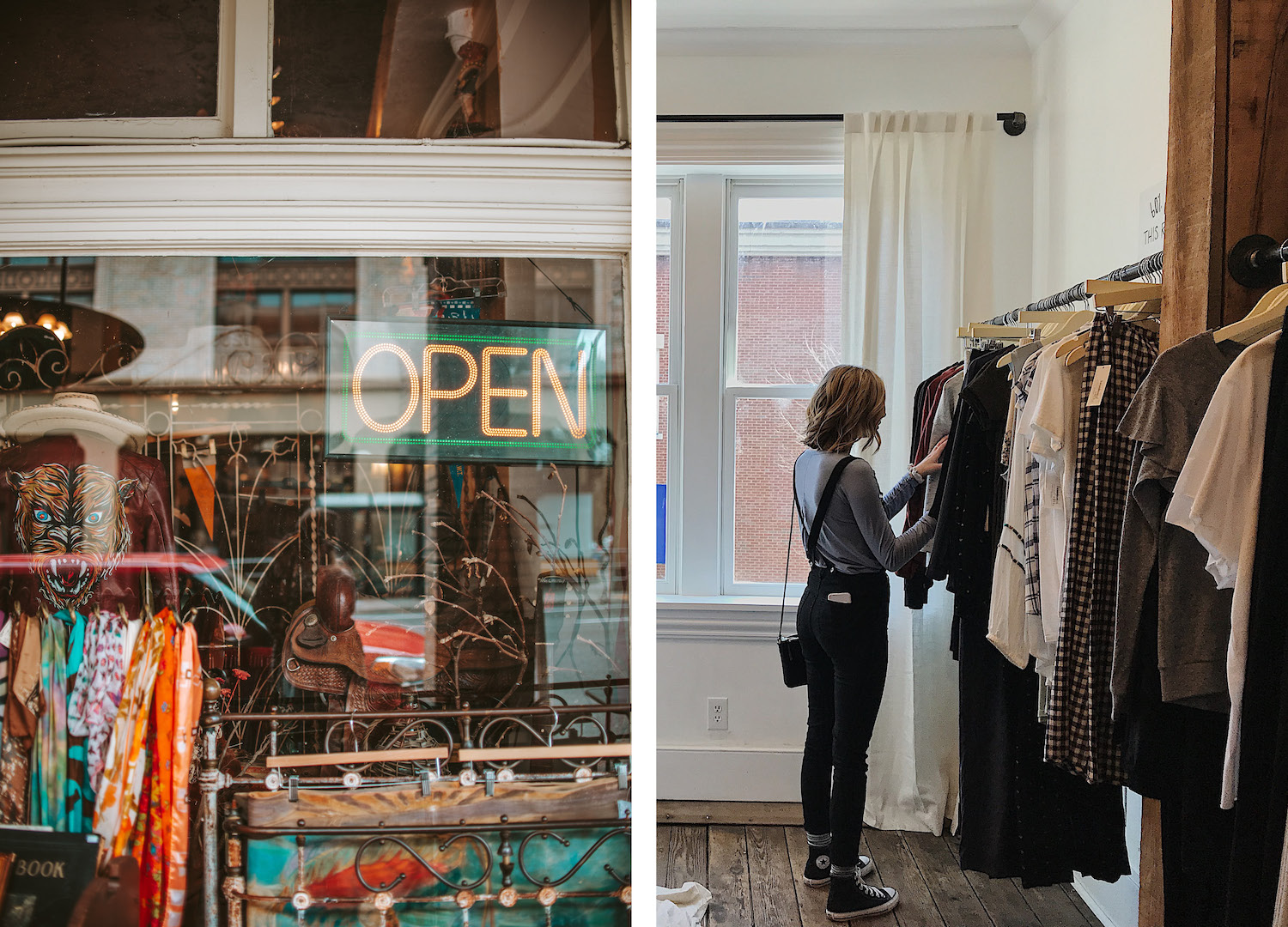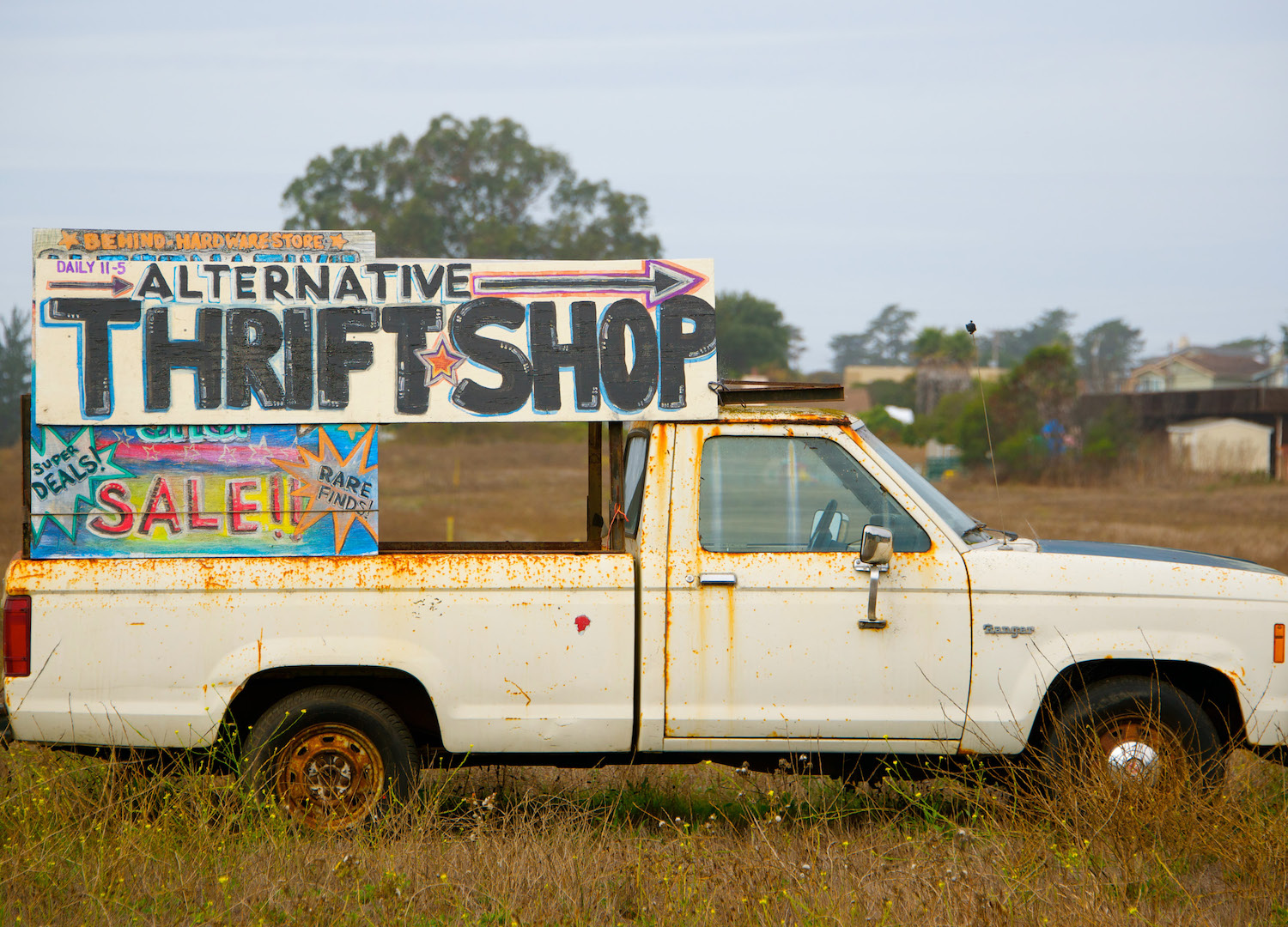
Second Life: Why You Should Join the Resale Revolution
words NIKKI ADDISON images via UNSPLASH
Yes, we adore fashion. We also adore all things sustainable. But more often than not, the two don’t go together. It only takes a light scan of the Ellen MacArthur Foundation’s report, ‘A New Textiles Economy: Redesigning Fashion’s Future’, to discover the textile industry’s horrifying impact on the planet. We’re producing more garments than ever before, but wearing them less. More and more clothes are ending up in landfill or incinerated. And the environmental implications of the production process itself are staggering; according to the report, the total yearly greenhouse gas emissions from textiles production – around 1.2 billion tonnes – amounts to more than all international flights and maritime shipping combined (pre-COVID, of course).
Consumers have a greener alternative to fast fashion thanks to the growing number of brands striving to create ethical, sustainable clothing. Yet supporting these kinds of brands isn’t viable for everyone, with the cost of producing environmentally friendly clothing generally raising the price point.
Thankfully, there is another option. This is where secondhand shops take the stage, beaming and twirling in all their colourful glory. They go by many names – op-shop, charity shop, consignment store, thrift store – but all share a common feature: they sell cheap preloved clothing and goods. Whether you’re a passionate thrifter or yet to dip your toe into the world of op-shopping (because it is a whole world, trust us), we’ve got a few good reasons why you should take the plunge and join the resale revolution plus a few hot tips for first-timers.

Thrifting is better for the planet
When you purchase preloved clothing, you make a conscious decision to consume mindfully and reject the fast fashion industry damaging our planet. Items with plenty of life left in them are given a second chance and diverted from going into landfill. By saying no to new clothes, you’re helping to lower pollution, minimise fabric wastage and reduce the use of resources like water and energy required to produce new clothing. If that’s not reason enough to hit up your nearest op shop, we don’t know what is.
… and it’s better for your wallet
The financial perk of secondhand shopping is an undeniable win. Prices vary across shops, but generally items at oppies will fall between $4 and $20. Other stores have designer racks where clothing is a little pricier, but still a total bargain. You’re also bound to stumble upon quality vintage items made from durable fabrics like cotton and wool, allowing you to get more wear out of your clothes than nasty synthetic materials – saving you money in the long run.
… and your wardrobe
Sick of seeing people wearing the same clothes as you? It’s time to start thrifting, stat. Secondhand shops are often a treasure-trove of one-of-a-kind retro finds and without cost as an influencing factor, you can let your inner creativity bloom. Think outside the square and consider how an item can be modified or repurposed. Maybe there are jeans you can cut into shorts, or a jacket that would look bomb with sewn-on patches.


Top tips for first-time op-shoppers
Know where to go
Starting out on your thrifting journey might be overwhelming, especially if you live near a bunch of secondhand stores. Word of mouth is a reliable source when it comes to deciding which ones to visit, but it’s also worth checking out your community Facebook page and even turning to Google. Jot down a few stores so you have a loose roadmap to follow – you’re going to want to make a day of it. No shops in the vicinity? Don’t worry: online secondhand shopping is a thing. There are tons of great online vendors curating banging collections of vintage clothing that you can buy without leaving the couch. Just google “online thrift/vintage clothing store Australia” and get scrolling.
Write a list
Sometimes it’s nice to simply browse, but if you’re embarking on a serious op-shopping excursion you’ll want some idea of what you’re looking for before you begin. In larger op-shops, you can easily waste time sifting through items you neither want nor need, so give yourself some guidance with a thrifty wish list. Help yourself out by making it as specific as possible – for example, if you want new shoes, what kind of shoes are you looking for? Sneakers, heels, leather flats? If you’re looking for sweaters, do you have a colour or style preference? Maybe you want some new running shorts – write it down and avoid searching through racks of activewear unnecessarily.
Know your style
Understanding your personal style is another element that’s going to make your experience a breeze. When you “get” your own unique vibe, you’re going to find it a lot easier to seek out items that you’ll actually wear on a daily basis, that work with you and your lifestyle. That doesn’t mean you have to try and define your sense of style by a specific naming convention (boho chic, surfer, minimalist, retro); it simply means knowing what kinds of clothes you usually like to wear. What items make you feel great? What do you find yourself pulling from your closet again and again? What kinds of fabrics do you love and hate?
Persistence is key
The two Ps, persistence and patience, are crucial to your op-shopping experience. Don’t expect to find something epic in the first store you enter. You might visit three or four before you find something you truly love – but that’s part of what makes secondhand shopping so fulfilling. You never know when, or where, you’re going to find that incredible piece… but when you do, it’s going to make your damn day.
Be open-minded
Read: think broadly. Don’t let yourself be confined by clothing stereotypes. It’s always worth checking out the men’s section for snuggly jumpers, boyfriend jeans, button-up shirts and oversized tees. Plus, a lot of op-shops have way more to offer than just clothes. Check out the art, furniture and crockery for more retro inspiration.
Embrace upcycling
Keep your eyes peeled for items that could be repurposed into something you know you’ll use. It can be difficult to envision this without prior inspo, so have a dig online for some DIY upcycling ideas before you go – there are plenty of blogs offering tips on how to transform seemingly spent items into amazing steals. We’re just spitballing here, but a few possibilities could be: sewing an awesome printed top into a headband, rocking a men’s button-up shirt as a dress, tie-dying a plain cotton tee…the list goes on.


